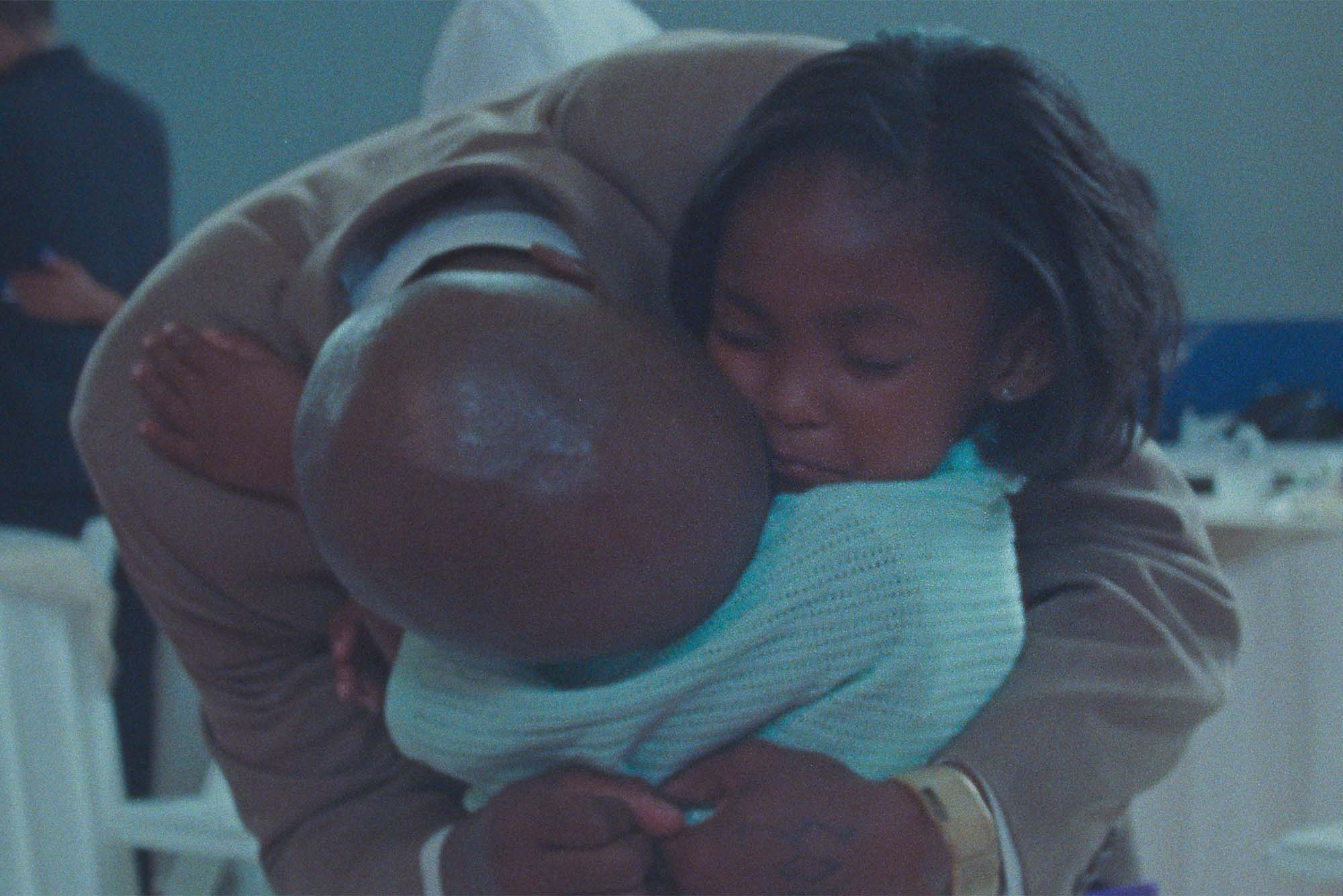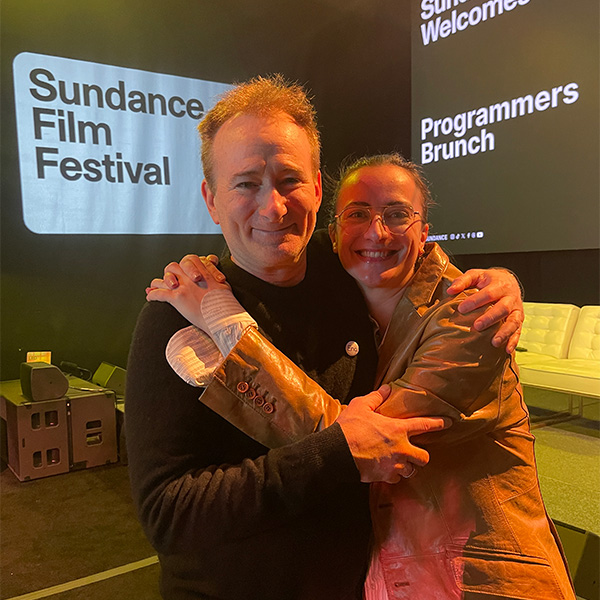Champion of Indie Films
Alum Paul Rachman shared a big win at Sundance, while his own Slamdance film fest celebrates 30 years

Daughters (2024) follows four young girls and their incarcerated fathers as they participate in a pioneering parenthood program at a Washington, D.C., prison. Paul Rachman (Pardee’82) coproduced the documentary, which won two big awards at Sundance. Photo courtesy of Netflix
Champion of Indie Films
Alum Paul Rachman shared a big win at Sundance, while his own Slamdance film fest celebrates 30 years
Paul Rachman has been having a pretty great year. In February, the filmmaker celebrated a major success at the Sundance Film Festival with Daughters (2024), a documentary he coproduced. Following four inmates at a Washington, D.C., prison as they participate in a pioneering family program, the film culminates in a father-daughter dance held in the facility. It won the Festival Favorite Award and Audience Award: US Documentary.
At the same time, Rachman (Pardee’82) celebrated the 30th anniversary of Slamdance, the indie film fest he cofounded. Designed to run concurrently with Sundance on its home turf in Park City, Utah, Slamdance has hosted the debut screenings of filmmakers from Christopher Nolan to Bong Joon-ho to the Russo brothers.
Seven months after the festivities, on August 14, Daughters will be available on Netflix.

Rachman says he’s never forgotten how he felt after watching the footage for the first time: “Just, wow, this is a great movie. These filmmakers are super talented and it should win awards. That feeling doesn’t happen often.”
Directed by Natalie Rae and Angela Patton, Daughters centers on four girls—5-year-old Aubrey Smith, 10-year-old Santana Stewart, 11-year-old Ja’Ana Crudup, and 15-year-old Raziah Lewis—and their incarcerated fathers as they participate in a Washington, D.C., prison’s Date With Dad Weekend program, a pathbreaking opportunity to bring together families fractured by the US carceral system. Now in its 12th year, the program begins with facilitated “community healing circles” for participating family members and culminates in a father-daughter semiformal that allows the dads to dance with and hold their kids—some for the very first time.
It’s a heart-wrenching watch at times, as when Aubrey practices her arithmetic using the amount of time left in her dad’s sentence, or when her mom, LaShawn Smith, recalls the night the police came to arrest her husband while their daughter slept in the other room.
“It makes you realize everything that’s wrong in the world,” Rachman says. “It makes you understand that it’s not really that difficult to fix it.”
Park City or Bust
Rachman met Rae and Patton during the COVID-19 pandemic, after the directors had gathered all of their footage. He signed on to coproduce—joining ranks with Kerry Washington, another cheerleader for the film—and serve as a sounding board for the first-time documentarians.
“They had all the materials, but they really didn’t know the path forward,” he says. “They knew they had to start editing, and they really wanted to get the film to Sundance.”
Rachman’s oversight was purely creative. Drawing on his 35-year history as a filmmaker, he set about supervising the editing process.
“Documentaries sometimes have several editors, and you don’t necessarily need the world-class superstar editor right at the beginning,” he says. “You really need somebody who can sludge through hundreds of hours of footage, organize it, and try to find the story. So we found someone to do that. It was really about looking at the process, looking at the story, seeing if they had to shoot more, and answering their questions.”

Rachman had unwavering belief in directors Rae and Patton. When Daughters failed to make it into any festivals in 2023, some of his fellow producers were itching to revisit the materials and take a new approach.
“I became the enemy,” he acknowledges. “I was like, ‘It needs more time. These filmmakers have an idea, their process is great, what they want to achieve is great.’ A year later it got into Sundance, won two awards, and we sold it to Netflix.”
The buzz around Daughters is steadily growing, with early Oscars speculation and a slew of positive reviews from the Associated Press, Variety, and IndieWire.
“Daughters has as much ugly-cry potential as any film in recent memory,” wrote IndieWire, “…[it] conveys the destructive inhumanity of America’s prison system by pointing our attention toward its collateral victims.”
Rachman recalls the screening: “Everybody, if they didn’t have tears in their eyes, was just so overwhelmed by such a beautiful cinematic experience. The feeling in the room was incredible.”
Come On and Slam
Rachman’s first documentary, American Hardcore, premiered at Sundance in 2006. The film chronicles the careers of some of the biggest names in punk and hardcore music at the height of its cultural stronghold. (He was partially inspired by the Boston music scene he observed as a BU student.)
But his relationship with Sundance goes back further: in 1994, he and a group of fellow filmmakers whose works had been rejected that year decided to travel to Park City for Sundance ’95 in order to “crash the party,” armed with their own projects and a guerilla attitude. Rachman remembers the time as “the year that Hollywood officially co-opted American independent film,” citing Disney’s purchase of Miramax Films and Fox’s launch of Fox Searchlight. Indie films, he and his compatriots felt, were no longer an indie filmmaker’s game.
“All of a sudden, the films appearing at Sundance were bigger movies that were being produced by independent divisions of Hollywood studios, and there was a lot less room to be programmed as a true small American indie,” Rachman says. “We started Slamdance to fill that gap, and we started it for first-time filmmakers, only budgeted for well under a million dollars, with no distribution. Those were our rules, and it stuck.”
That first year, they set up screenings in Park City at any locations that would have them, attended by friends, passersby, and the cinematically curious.
The next year, they canonized the event as Slamdance, making official their plans to open the festivities to talented newcomers. It was an ideological takeover—and a successful one at that. Nearly three decades after debuting with 48 submissions, the fest received 13,000 in 2023, a new record. It has also expanded to include a streaming platform, a two-week summer intensive, and a screenwriting clinic. (Meanwhile, fans of films like The Daytrippers [1997] and Paranormal Activity [2007] have the fest to thank.) In April, Slamdance announced its departure from Park City, and the Sundance crowd, for a new home in Los Angeles.
“Real estate is limited in Park City; it’s really become a billionaire’s playground,” Rachman says. “We can grow [in Los Angeles].”
These days, cofounder Peter Baxter (Wild in the Streets) is Slamdance’s president, while Rachman is senior programming director and sits on its board of directors, a role he doesn’t plan on giving up any time soon. As with Daughters, it’s an opportunity for him to offer his skills and perspective to the next generation.
“I think at the root of all art is that it’s a community event,” he says. “It takes other people to do it—people with a similar mindset, a similar desire. There’s no thinking that Hollywood is just going to do it for you.”

Comments & Discussion
Boston University moderates comments to facilitate an informed, substantive, civil conversation. Abusive, profane, self-promotional, misleading, incoherent or off-topic comments will be rejected. Moderators are staffed during regular business hours (EST) and can only accept comments written in English. Statistics or facts must include a citation or a link to the citation.